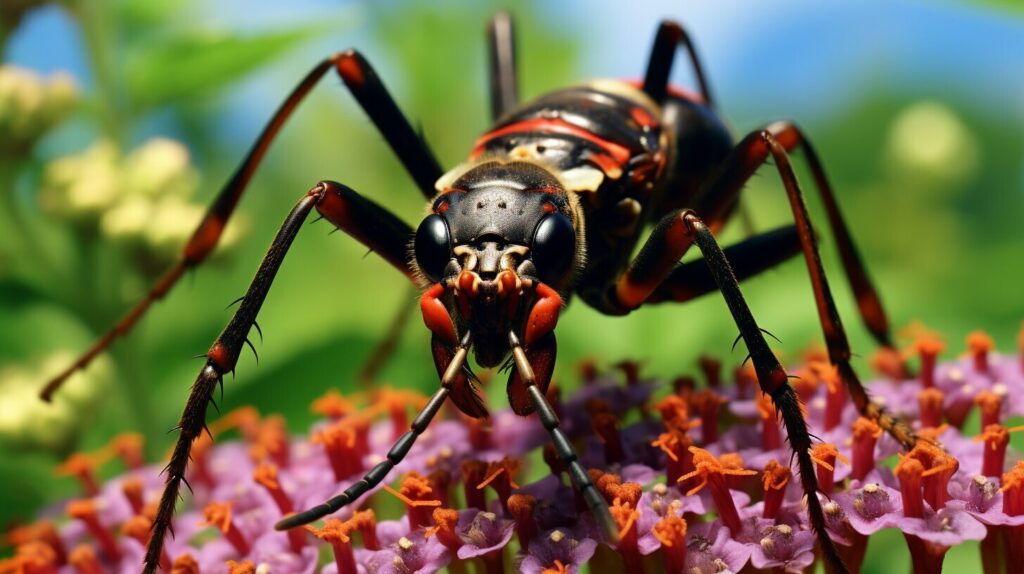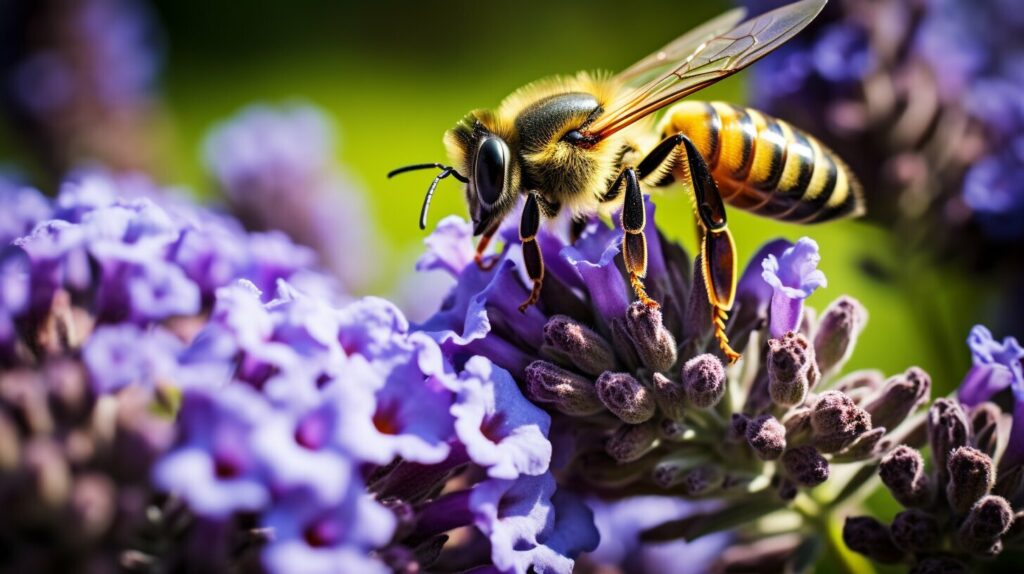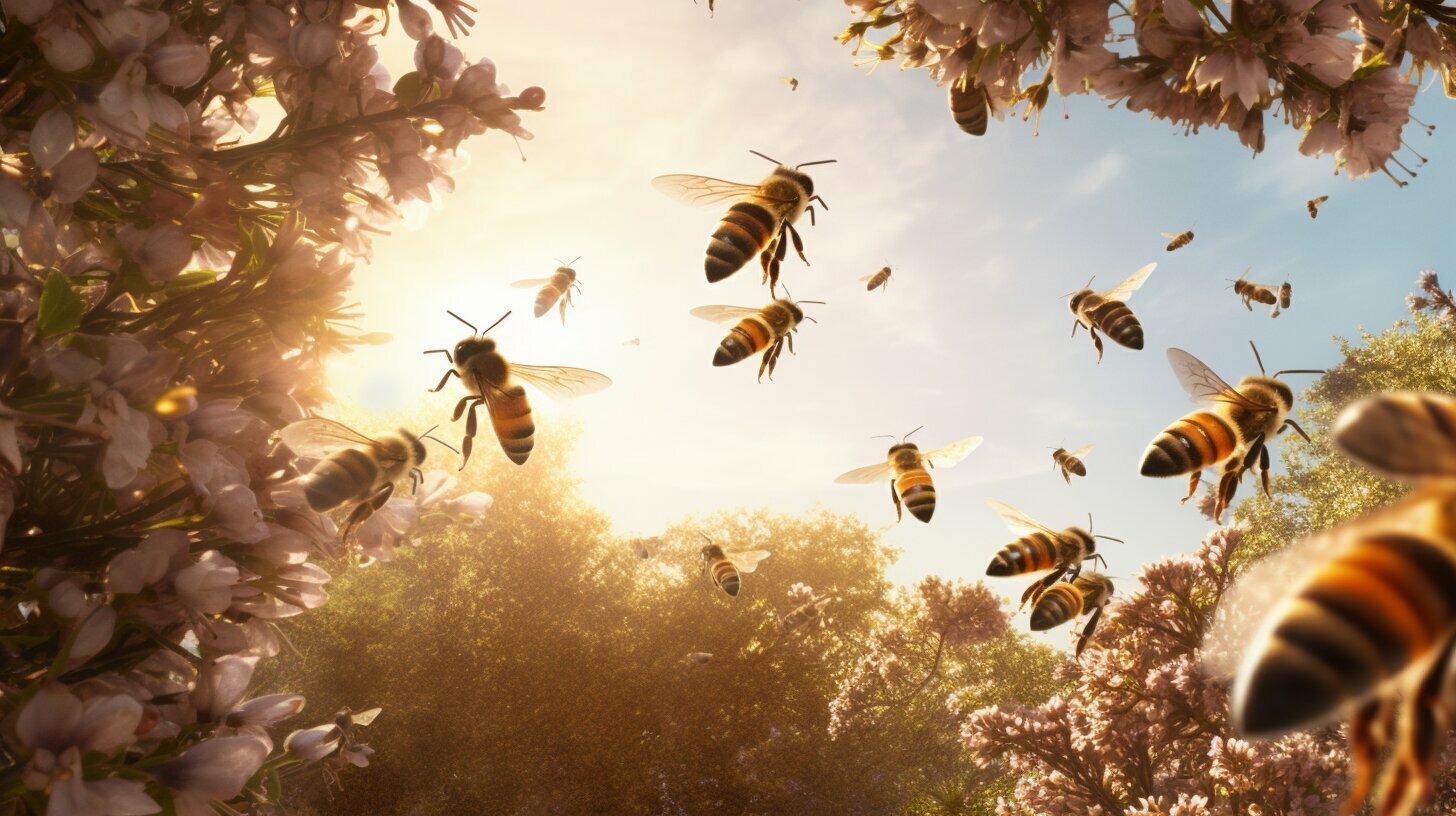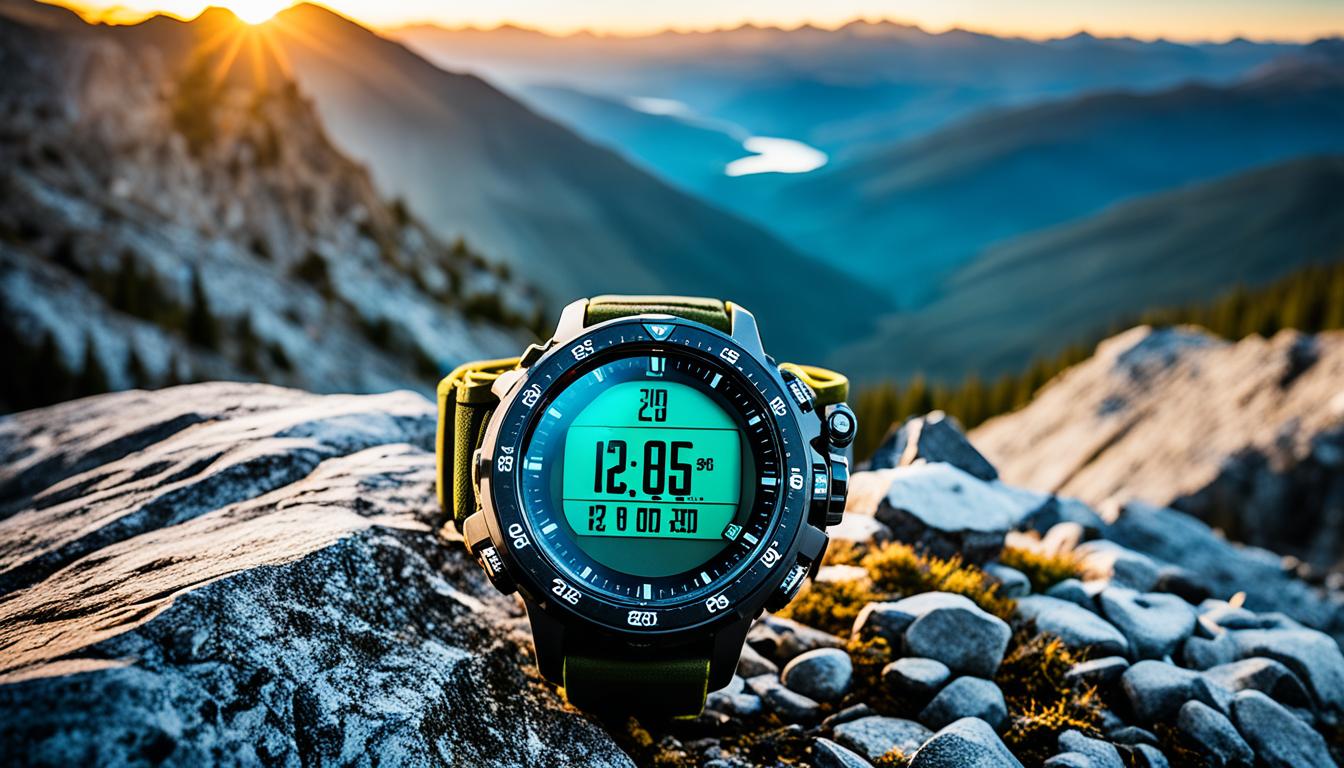Deadly insects are a fascinating yet dangerous part of the natural world. From lethal arthropods to poisonous bugs, these creatures can cause harm to humans in various ways.
It is crucial to understand the risks associated with deadly insects and take necessary precautions to protect yourself and your loved ones against the potential harm they can cause.
In this article, we will explore the world of deadly insects, including the most dangerous bugs and the risks of deadly bug bites and fatal insect stings. We will also provide essential information on how to stay safe from deadly insect infestations and how to protect yourself during outdoor activities.
Key Takeaways
- Deadly insects can cause harm to humans in various ways
- Understanding the risks associated with deadly insects is crucial for protection
- Precautions such as using insect repellents and wearing protective clothing can significantly reduce the risk of encounters
- Natural remedies and repellents can also help keep deadly insects at bay
- Travelers should be prepared and aware of risks when visiting regions known for deadly insects
Understanding Deadly Insects and Arthropods
Deadly insects and arthropods come in various shapes and sizes, but one thing they have in common is their ability to cause harm to humans. Let’s take a closer look at the characteristics and habitats of these lethal creatures.
Lethal Arthropods
Arthropods, such as spiders, scorpions, and centipedes, are among the most lethal creatures on the planet. They can be found in almost every part of the world, from deserts to rainforests, and even in your own home. Most arthropods have venomous bites or stings that can cause severe pain, swelling, and even death in extreme cases.
Disclosure: When you buy through links on our site, we may earn an affiliate commission.
Some of the most deadly arthropods include:
| Arthropod | Habitat | Risk Level |
|---|---|---|
| Black Widow Spider | North America, South America, Africa, Australia | High |
| Scorpion | Africa, Middle East, North America, South America | High |
| Centipede | Tropical and subtropical regions worldwide | Medium to high |
To avoid encountering lethal arthropods, it’s important to be aware of their habitats and take precautions, such as wearing protective clothing and using insect repellents.
Mortal Insect Species
While not all insects are lethal, some can cause significant harm to humans. Mortal insect species are those that have the potential to cause fatal injuries, such as through bites or stings. Understanding these insects can help you take necessary precautions to avoid harmful encounters.
Some of the most lethal insect species include:
- Japanese giant hornet
- Africanized honeybee
- Kissing bug
- Tsetse fly
It’s worth noting that even non-lethal insect species can still pose risks to humans, such as through allergic reactions or the transmission of diseases.

By understanding the characteristics and habitats of lethal arthropods and mortal insect species, you can better protect yourself against their dangers. Remember to take necessary precautions, such as wearing protective clothing and using insect repellents, to avoid harmful encounters.
Most Deadly Insects Around the World
Insects can be found in almost every corner of the world, but some species are more dangerous than others. Here are some of the deadliest bugs to watch out for:
| Insect | Location | Risk Level |
|---|---|---|
| Africanized honey bee (also known as killer bees) | Africa, South America, Central America | High |
| Anopheles mosquito | Sub-Saharan Africa, South Asia, parts of South America | High |
| Box jellyfish | Australia | High |
| Brazilian wandering spider | South and Central America | High |
| Bullet ant | Central and South America | High |
| Cone snail | Tropical waters worldwide | High |
| Japanese giant hornet | Japan | High |
| Kissing bug (also known as assassin bug) | Central and South America | High |
| Tsetse fly | Sub-Saharan Africa | High |
These deadly insects can cause a range of symptoms, from mild irritation to severe reactions and even death. It’s important to be aware of the potential risks when traveling to areas where these insects are prevalent, and to take the necessary precautions to protect yourself.
Remember, deadly insects can be found anywhere, so it’s always important to stay vigilant and informed about the local insect population.

Dangerous Bug Bites: Symptoms and Treatment
Encountering harmful insects can lead to severe bug bites that cause various reactions. The severity of the reaction depends on the type of insect and your sensitivity to their bites. Some insect bites are harmless, while others can be deadly. It is essential to recognize the symptoms and seek medical attention when necessary.
The most common symptoms of a bug bite include pain, itching, and redness around the bite area. In severe cases, the bite can cause allergic reactions, ranging from mild to life-threatening anaphylaxis. Symptoms of an allergic reaction include difficulty breathing, swelling of the face, tongue or throat, and a rapid heartbeat.
To treat a bug bite, you can apply a cold compress to the affected area to reduce pain and swelling. Over-the-counter antihistamines and pain relievers can also help alleviate symptoms. However, if you experience severe symptoms like difficulty breathing, seek immediate medical attention.
Preventing bug bites is preferable and can be achieved by wearing protective clothing and using insect repellents that contain DEET. Avoid wearing scented perfumes and lotions, and use caution when around stagnant water, as it can be a breeding ground for insects.

Remember that different insects have different bites, and some may require different treatments than others. Knowing the type of insect that bit you can help determine the best course of action to take. In case of doubt, always seek medical attention.
Fatal Insect Stings: Identifying the Culprits
When it comes to fatal insect stings, it is essential to know which insects are responsible for them. Most commonly, bees, wasps, and hornets are the culprits. These insects are part of the Hymenoptera order and have venomous stingers that they use to defend themselves or their nests.
Bee stings are usually not fatal, except in rare cases of an allergic reaction known as anaphylaxis. However, Africanized honeybees, also known as killer bees, are significantly more aggressive and can swarm and attack in large numbers, causing serious harm or death.
Wasps, on the other hand, can be more dangerous due to their venomous stingers, which they can use repeatedly. Some wasp species, such as the bald-faced hornet, can cause severe pain and swelling, even in non-allergic individuals.
Other lethal arthropods to watch out for are scorpions, spiders, and centipedes. These creatures have venomous bites or stings that can be fatal, particularly if the victim is a child, elderly, or has an underlying medical condition.

If you are stung by an insect, observe the area for any signs of an allergic reaction, such as hives, swelling, or difficulty breathing. Seek medical attention immediately if you experience any of these symptoms, or if the sting is near your mouth, eyes, or throat.
It is crucial to teach children about the risks of insect stings and how to avoid them. Discourage them from approaching beehives, wasp nests, or any unknown insects. Additionally, teach them to avoid wearing bright colors or fragrances, as they can attract insects.
Protective measures, such as wearing long-sleeved shirts and pants and using insect repellents, can also minimize the risk of being stung by lethal arthropods. Remember to always stay alert and prepared when spending time outdoors, particularly in regions where these insects are prevalent.
Protection Tips Against Deadly Insects
Encountering deadly insects can be frightening, but there are measures you can take to protect yourself and your loved ones. Here are some practical tips to keep in mind:
- Use insect repellent: Apply an insect repellent containing DEET to exposed skin and clothing, and reapply as directed. Alternatively, use natural repellents such as citronella or eucalyptus oil.
- Wear protective clothing: When spending time outdoors, wear long-sleeved shirts, long pants, and closed-toe shoes to minimize skin exposure. Consider wearing a hat and gloves as well.
- Maintain a pest-free environment: Regularly remove standing water, keep garbage cans sealed, and fix any leaks or holes in walls or screens to prevent insects from entering your home.
- Be cautious when outdoors: Avoid walking barefoot, and watch where you step or sit.
- Learn about dangerous insects: Familiarize yourself with the specific types of deadly insects in your area, including their habitats and behaviors.
By following these tips, you can significantly reduce the risk of encountering harmful insects.
Protecting Your Pets
It’s not just humans who are at risk from deadly insects. Protect your pets by keeping them indoors during peak insect activity and ensuring they are up to date on preventative treatments recommended by your veterinarian.

Dealing with a Deadly Bug Infestation
Discovering a deadly bug infestation can be overwhelming and stressful. These pests are not only harmful to your health, but they can also damage your home and belongings.
If you suspect a deadly bug infestation, it’s essential to take prompt action. Ignoring the problem will only allow the infestation to grow and become more challenging to eliminate.
The first step in dealing with a deadly bug infestation is to identify the pest. Different bugs require different treatments, so accurate identification is crucial in determining the most effective approach.
Once you have identified the pest, you can explore different options to eliminate them. For severe infestations, it’s recommended to seek the help of professional pest control services. They have the expertise and tools to deal with even the most challenging and hazardous infestations.
| Prevention Tips | Treatment Options |
|---|---|
|
|
It’s important to note that prevention is key in avoiding a deadly bug infestation in the first place. Regularly check for signs of an infestation and take measures to prevent pests from entering your home.

By taking proactive measures, you can protect yourself and your home from the harmful effects of deadly bugs. Don’t hesitate to seek professional help if needed, and always prioritize your safety and well-being.
Child Safety and Deadly Insects
As a parent, protecting your children from harmful insects is a top priority. Fortunately, there are several steps you can take to minimize the risk of encounters with deadly insects.
Teach Your Children About Dangerous Bugs
One of the best ways to protect your children from deadly insects is to educate them about the types of bugs to avoid. Teach them to recognize the most common dangerous insects, such as black widows, scorpions, and poisonous spiders.
Explain to them that if they see a bug they don’t recognize or if they feel like they’ve been bitten or stung, they should come and tell you immediately. Let them know that they should never touch a bug unless it’s under your supervision.
Create a Bug-Safe Environment
Make sure your home is as bug-free as possible. Seal any cracks or gaps in the walls, doors, and windows. Keep your yard clear of debris and standing water. Trim back any bushes or trees around your home to minimize hiding spots for bugs.
When your kids are playing outside, make sure they’re wearing shoes and long pants to protect them from bug bites. Additionally, you may want to consider using an insect repellent that’s safe for children, especially during peak bug season.
Know What to Do in Case of a Bite or Sting
Even with all the preventive measures in place, accidents can still happen. Make sure you know what to do in case your child is bitten or stung by a harmful insect. First, remove any stingers if present and wash the area with soap and water. Then, apply a cool compress to help reduce swelling and pain.
If your child experiences any severe symptoms, such as difficulty breathing or swelling of the mouth or throat, seek medical attention immediately.

By following these steps, you can help protect your children from the dangers of deadly insects.
Deadly Insects and Outdoor Activities
If you love spending time outdoors, it’s important to be aware of the risks of encountering deadly insects. Here are some tips to help you stay safe:
- Wear long sleeves and pants to protect your skin from bug bites.
- Use insect repellent with DEET or picaridin to prevent insect bites.
- Stay on designated trails to avoid disturbing nests or habitats.
- Be aware of your surroundings and avoid walking through tall grass or bushes where bugs may hide.
- Check for bugs before sitting down or laying on the ground.
If you are camping or staying overnight outdoors, take extra precautions:
- Set up camp away from areas with standing water or high grass.
- Use a mosquito net over your tent or sleeping area.
- Keep food stored securely to prevent attracting insects.
- Inspect your gear, clothing, and bedding for bugs before and after use.
In case of a bug bite or sting:
- Remain calm and move away from the insect if possible.
- Remove any stingers or foreign objects from the affected area.
- Wash the area with soap and water.
- Apply a cold compress to reduce swelling.
- Seek medical attention if you experience any severe symptoms, such as difficulty breathing or a severe allergic reaction.

Remember, being prepared and taking necessary precautions can help you avoid dangerous encounters with deadly insects and enjoy your outdoor activities with peace of mind.
Natural Remedies and Repellents for Deadly Insects
Protecting yourself from deadly insects doesn’t have to involve harsh chemicals. Many natural remedies and repellents can help keep these harmful insects at bay.
Essential oils such as peppermint, eucalyptus, and citronella are known for repelling insects. You can dilute a few drops of essential oil in water and apply it to your skin or clothing.
| Essential Oil | Benefits |
|---|---|
| Peppermint | Repels ants, spiders, and mosquitoes. |
| Eucalyptus | Repels mosquitoes and ticks. |
| Citronella | Repels mosquitoes and other flying insects. |
You can also create a natural insect repellent spray by combining essential oils with water and a carrier oil such as almond or jojoba oil. Mix them in a spray bottle and apply as needed.
Diatomaceous earth is a natural powder made of fossilized algae. It can be used to kill insects by dehydrating them. Sprinkle diatomaceous earth around the perimeter of your home, or use it in areas where insects are commonly found.

Citrus peels are another natural way to repel insects. Simply place citrus peels around your home, or rub them on your skin or clothing.
- Lemon is effective against mosquitoes and fleas.
- Lime can repel ticks.
- Orange works against ants and cockroaches.
Remember, while natural remedies and repellents can be effective, they may not offer complete protection against deadly insects. It’s essential to take additional precautions, such as wearing protective clothing and using insect repellents, especially in high-risk areas.
Traveling to Regions with Deadly Insects
If you are planning to travel to regions known for deadly insects, it’s essential to be informed and prepared. Different regions of the world have various lethal arthropods and harmful insects that you need to be wary of, and the risks may extend beyond just bug bites and stings. In some cases, deadly bug infestations also pose health hazards.
Before embarking on your journey, research the area you will be visiting and the types of deadly insects and arthropods prevalent in that region. The World Health Organization also provides information on health risks and preventive measures for specific destinations.
It’s also crucial to get vaccinated against specific insect-borne diseases before your trip. For example, if you are traveling to regions with malaria-carrying mosquitos, it’s essential to get vaccinated against the disease. It’s best to consult a travel medicine specialist for expert advice on necessary vaccinations and other preventive measures against deadly insects.
When traveling to regions with deadly insects, ensure that you pack appropriate clothing to protect yourself from insect bites. Wear long-sleeved shirts and pants and use insect repellents containing DEET or other recommended ingredients. It’s also a good idea to avoid wearing bright colors and strong fragrances, which may attract insects.

If you are camping or staying in accommodation close to the outdoors, ensure that you check for signs of any bug infestations. Keep your surroundings clean and tidy and dispose of any food scraps or waste properly. It’s advisable to keep windows and doors closed, use bed nets, and avoid sleeping on the ground.
Conclusion
While insects play an important role in our ecosystems, some species pose serious risks to human health and safety. By educating ourselves on the world’s most dangerous bugs, we can take proper precautions to prevent harmful encounters.
Always be vigilant when spending time outdoors, especially in regions known for venomous insects. Equip yourself with protective clothing, repellents, and first aid knowledge. Remain calm but act swiftly if you are bitten or stung.
At home, be proactive in keeping a pest-free environment and teaching children about risky bugs. Although deadly insects demand our caution, don’t let them keep you from enjoying the beauty of nature.
With prudence and preparation, we can marvel at our planet’s biodiversity while steering clear of its most hazardous inhabitants. Stay safe, stay informed, and keep your sense of adventure alive.
FAQ
What are some examples of deadly insects?
Examples of deadly insects include venomous spiders, killer bees, scorpions, and certain species of ants.
How can I protect myself from deadly insects?
To protect yourself from deadly insects, use insect repellents, wear protective clothing, and maintain a pest-free environment.
What are the symptoms of a dangerous bug bite?
Symptoms of a dangerous bug bite may include swelling, redness, pain, itching, and in severe cases, difficulty breathing or anaphylaxis.
What should I do if I get stung by a deadly insect?
If you get stung by a deadly insect, remove the stinger if present, clean the area with soap and water, apply a cold compress, and seek medical attention if necessary.
How can I prevent bug bites?
To prevent bug bites, wear long sleeves and pants, use insect repellents, avoid outdoor activities during peak insect activity times, and eliminate standing water around your home.
What should I do if I suspect a deadly bug infestation in my home?
If you suspect a deadly bug infestation, contact a professional pest control service for effective elimination methods and preventive measures.
Are deadly insects more dangerous to children?
Deadly insects can pose a higher risk to children. It is important to teach children about dangerous bugs, create a bug-safe environment, and supervise them during outdoor activities.
How can I stay safe from deadly insects during outdoor activities?
To stay safe during outdoor activities, use insect repellents, wear protective clothing, avoid brightly colored clothing and floral fragrances, and be cautious around nests or hives.
Are there natural remedies or repellents for deadly insects?
Yes, there are natural alternatives such as essential oils, homemade insect sprays, and certain plants that can repel or deter deadly insects.
What precautions should I take when traveling to regions with deadly insects?
When traveling to regions with deadly insects, research destination-specific risks, get necessary vaccinations, use insect repellents, and follow local guidelines to prevent encounters with dangerous bugs.
How can staying informed and prepared help protect against deadly insects?
Staying informed about deadly insects and following the provided protection tips can significantly reduce the risks associated with encounters. Prioritize your safety and the safety of others by staying prepared.




